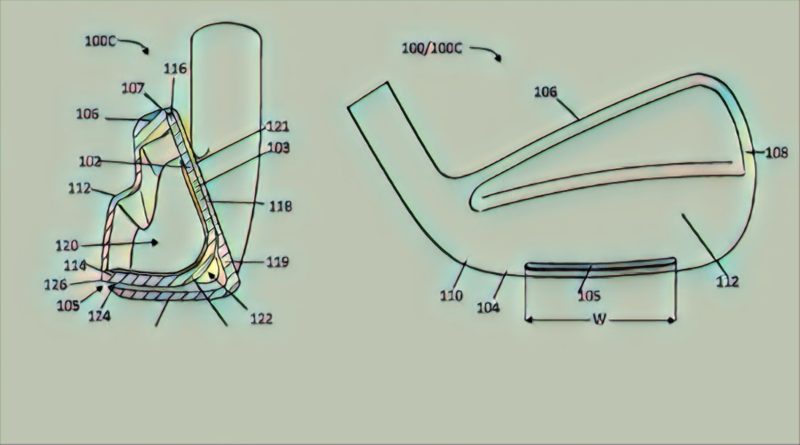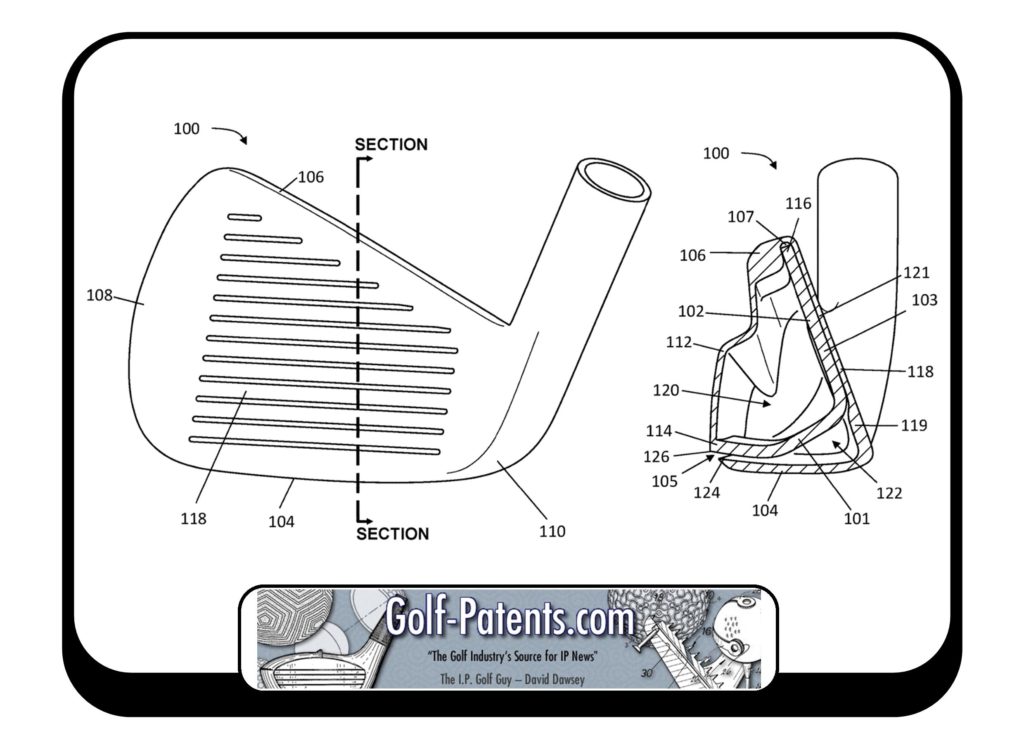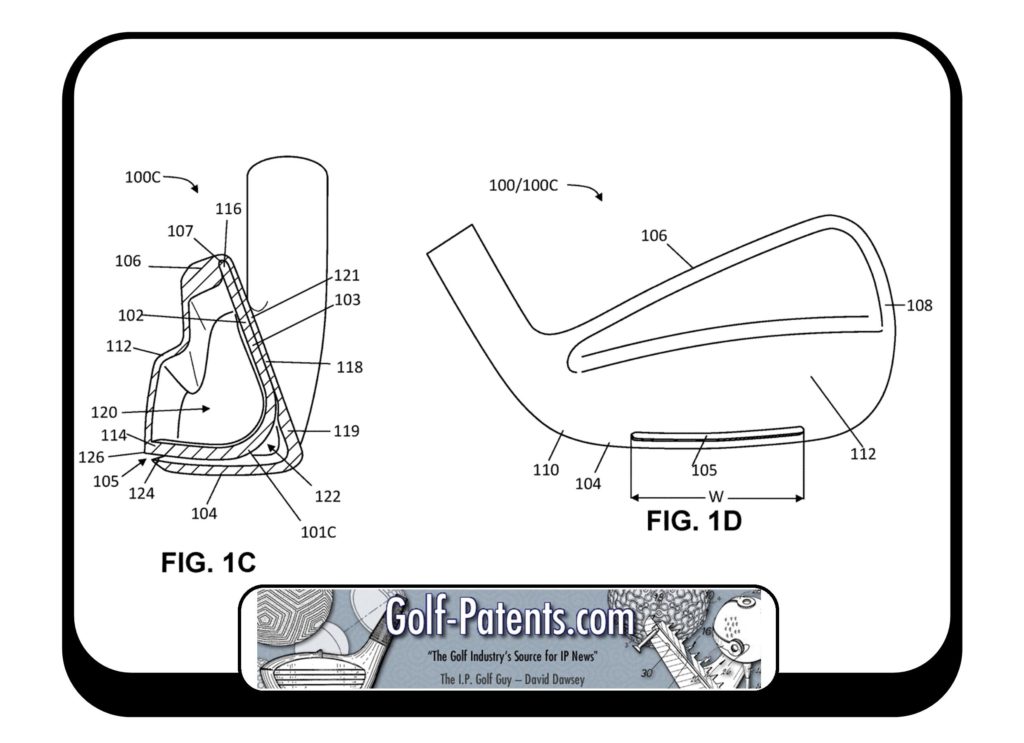Will We See This Iron Technology in 2019? Take a Guess Who Developed It
Check out this iron design disclosed in a patent that issued earlier this month.
The patent explains:
The technologies described herein contemplate a golf club head, such as an iron, fairway metal, driver, or other golf club head, that includes a double-walled striking face, e.g., a golf club head having an inner wall structure in contact with an outer striking face. In examples, such club heads may include a sole channel. One end of the inner wall structure is fixed to the golf club head, while another end of the inner wall structure is unfixed, allowing the inner wall structure to slide against a rear surface of the striking face. Such an inner wall structure contributes to a spring effect of the striking face, thus improving ball speed and launch characteristics from strikes near the center and top of the striking face. The golf club head may also include a sole channel that creates improved ball speed and launch characteristics for strikes near the center and bottom of the striking face. Accordingly, the use of the double-walled striking face and the sole channel in tandem provide improved launch characteristics, such as launch angles, spin characteristics, and ball speed, across the entire striking face, from the topline to the sole. Thus, both shots from the turf and off a tee produce improved launch characteristics.
FIG. 1A depicts a perspective view of a golf club head 100 having an inner wall structure 102 and a sole channel 105, and FIG. 1B depicts a section view of the golf club head 100. FIGS. 1A-1B are described concurrently. The golf club head 100 includes striking face 118 attached to a sole portion 104, a toe portion 108, a topline 106, and a heel portion 110. The topline 106 is also attached to a back portion 112. The inner wall structure 102 extends from the back portion 112 towards the striking face 118, and a first cavity 120 is partially defined (in section) by the back portion 112, the topline 106, and the inner wall structure 102. The inner wall structure 102 includes a fixed end 114, attached to the back portion 112, and an unfixed end 116. The fixed end 114 may be attached to the back portion 112 via welding, brazing, or fastening, such as with screws or rivets, along with any other suitable attachment methods. The unfixed end 116 is received by a recess 107 in an internal portion of the topline 106. The recess 107 is shaped or configured so as to receive, but not fix or secure, the unfixed end 116 of the inner wall structure 102, such that the unfixed end 116 may move freely therefrom. The inner wall structure 102 also includes a support portion 101 and a contact portion 103. The support portion 101 supports the contact portion 103, which is in contact with a rear surface of the striking face 118. In the example depicted, the support portion 101 generally has an angled v-shape from the back portion 112 to the striking face 118, and a component of the support portion 101 extends substantially orthogonal to the striking face 118. The contact portion 103 runs substantially parallel to the striking face 118. Lubrication may be disposed between the contact portion 103 and the striking face 118 so as to reduce the friction between those elements. This allows for easier sliding of the surfaces against one another. Further, in some examples, additional machining or processing is performed on these contacting elements to create extra-smooth surfaces to further reduce friction therebetween. The contact portion 103 may also be coated with a polymer, such as a TEFLON-brand coating available from E. I. duPont de Nemours and Company of Wilmington, Del., or other similar materials for management of vibrations, friction, and alteration of sound properties emitted upon striking a golf ball.
Which manufacturer do you think developed this invention? Let me know in the comments.
This information comes from USPN 10,065,088 titled “Golf Club Having Double-Walled Striking Face.”
Dave Dawsey – Invention Lawyer
PS – please follow me on Twitter (@GolfPatents), and heck – connect with me on LinkedIn.
PPS – If you like what we are doing, please considering helping us out and make your online gear purchases through our Amazon affiliate link. Every little purchase helps us keep the site up and running! Thanks.



